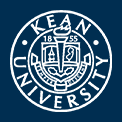Files
Download Full Text (5.0 MB)
Description
John Faucheraud Grimke in Charleston, SC wrote to Messrs. Lydig or Barnes, addressed to New York, NY. This contract was an agreement to pay John Kean $70. People included: Lydig, Barnes, John Kean, Mary Harnett, John Wilkes, Jonathan Burrall, Whitehead Fisk, David Baker. Places included: Charleston, South Carolina, New York.
Author/Creator
John Faucheraud Grimké [also spelled Grimke or Grimkey] (1752-1819)
Recipient
Messrs. Lydig and Barnes
Creation Date
5-13-1793
Document Type
Manuscript
Location
Charleston, South Carolina
Inventory Location
Bay 1, Column 1, LHC Series 2
Recommended Citation
Grimke, John F.. John Faucheraud Grimke to Messrs. Lydig or Barnes, May 13, 1793. Manuscript. From Special Collections Research Library and Archive, Kean University, Liberty Hall Collection 1790s. https://digitalcommons.kean.edu/lhc_1790s/190
Rights
This collection is open to the public for research use. Copyright remains with Kean University. Credit this material. Personal photographs may be made for research purposes. Inquiries regarding publishing material from the collection should be directed to the Special Collections Research Library and Archive at keanscrla@kean.edu.
Publishing Repository
Special Collections Research Library and Archive, Kean University



Collection
Liberty Hall Collection, 1711-1847 (bulk 1790-1830)